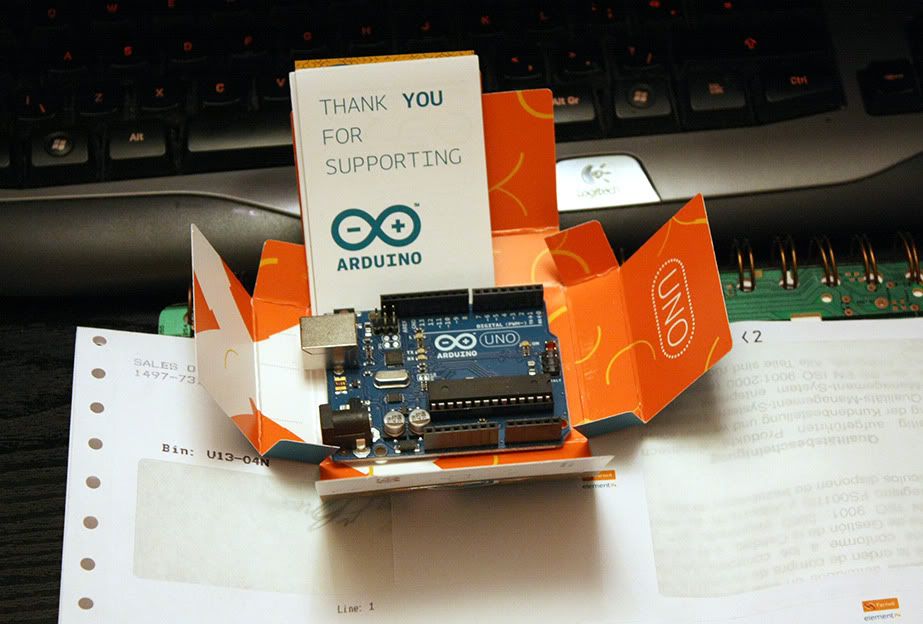Thus far, I had resisted the Arduino's allure. I don't have any experience with Atmega processors, my usual preference is for one of the Microchip PIC families or, if more power is needed, an ARM cored device. But how could I give an opinion without owning one and having a play around with it? I was impatient as usual, and the people at Farnell / Element-14 had one sitting on my desk within 24 hours. Excellent.
 |
| The Arduino Uno |
I will go into more details later, but here is a quick rundown.
The Arduino Uno is a totally open source embedded development board, based around the Atmel Atmega328. Other "flavours" of Arduino are available, usually based around other Atmega chips. Arduino isn't just limited to the hardware, however. It also covers the development environment which, to my mind, is the crucial factor in it's success.
 |
| The Arduino Development Environment (Click for larger image) |
As you can see from the screen grab above, this isn't Microsoft Visual Studio. Thank goodness. Simple and clean with syntax highlighting. This is why Arduino has taken off.
The Uno itself measures just 53x69mm, and arrives in a simple cardboard box that looks more like a packet of cigarettes or condoms. No. Really. The accompanying leaflet covers the usual legal disclaimers and little more. It would be nice if it said "Congratulations on your new Arduino, now download your free development software from www.arduino.cc" or similar.
It is powered via the standard USB "B" socket, or via a jack socket. I find it odd that they haven't moved over to a mini or micro USB, but no great shakes. The general standard of construction is solid, as you might expect with a mature product, the CPU being a socketed 28-pin DIP/DIL device. This is so you can remove it after programming, or plug it into a breadboard. Or, I suppose, replace it if you toast it.
There is a HUGE amount of resources for the Arduino around the Internet. Almost too many. If you are interested in seeing what it can do, and how easy it is to use, then I recommend Jeremy Blum's YouTube series here.
I got mine from Farnell / Element-14, who stock a range of Arduinos and related gear.
The Arduino Uno I reviewed is available here http://uk.farnell.com/arduino/a000046/board-arduino-uno/dp/1848687
Arduino's home is at arduino.cc
John's Tronix Stuff tutorials here.
Additional: If anyone has any good Arduino tutorial sites they would like me to add, simply add a comment or drop me a line.

Great article Mike. If your readers are interested I have published an extensive series of Arduino tutorials here > tronixstuff.wordpress.com/tutorials
ReplyDeleteA good set of tutorials there! Happy to publish your comment. I will be reading them all myself too. Cheers!
ReplyDeleteI have a nice post on how to code and create a standalone arduino clone without a crystal using just the arduino ide as the programming interface. no bootloader needed so you can code blank chips. The details are about 1/2 the way through the post:
ReplyDeletehttp://www.toddfun.com/2011/01/01/making-a-custom-arduino-board-to-hack-a-christmas-photo-frame/